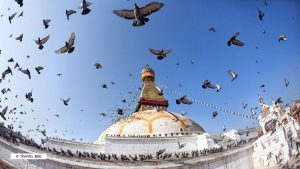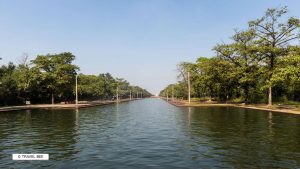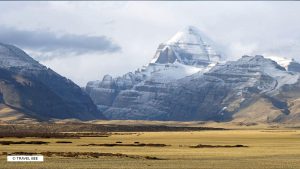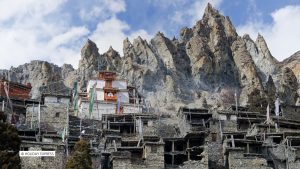Nepal festival guide, nestled in the lap of the Himalayas, offers a vibrant tapestry of seasonal festivals and family-friendly adventures amidst its breathtaking natural landscapes. Each festival in Nepal is a spirited celebration deeply rooted in centuries-old traditions, providing visitors with profound insights into the country’s rich cultural heritage. At the same time, family tours present opportunities for adventure, bonding, and creating cherished memories amidst the awe-inspiring beauty of the Nepal seasonal festivals Himalayan kingdom.
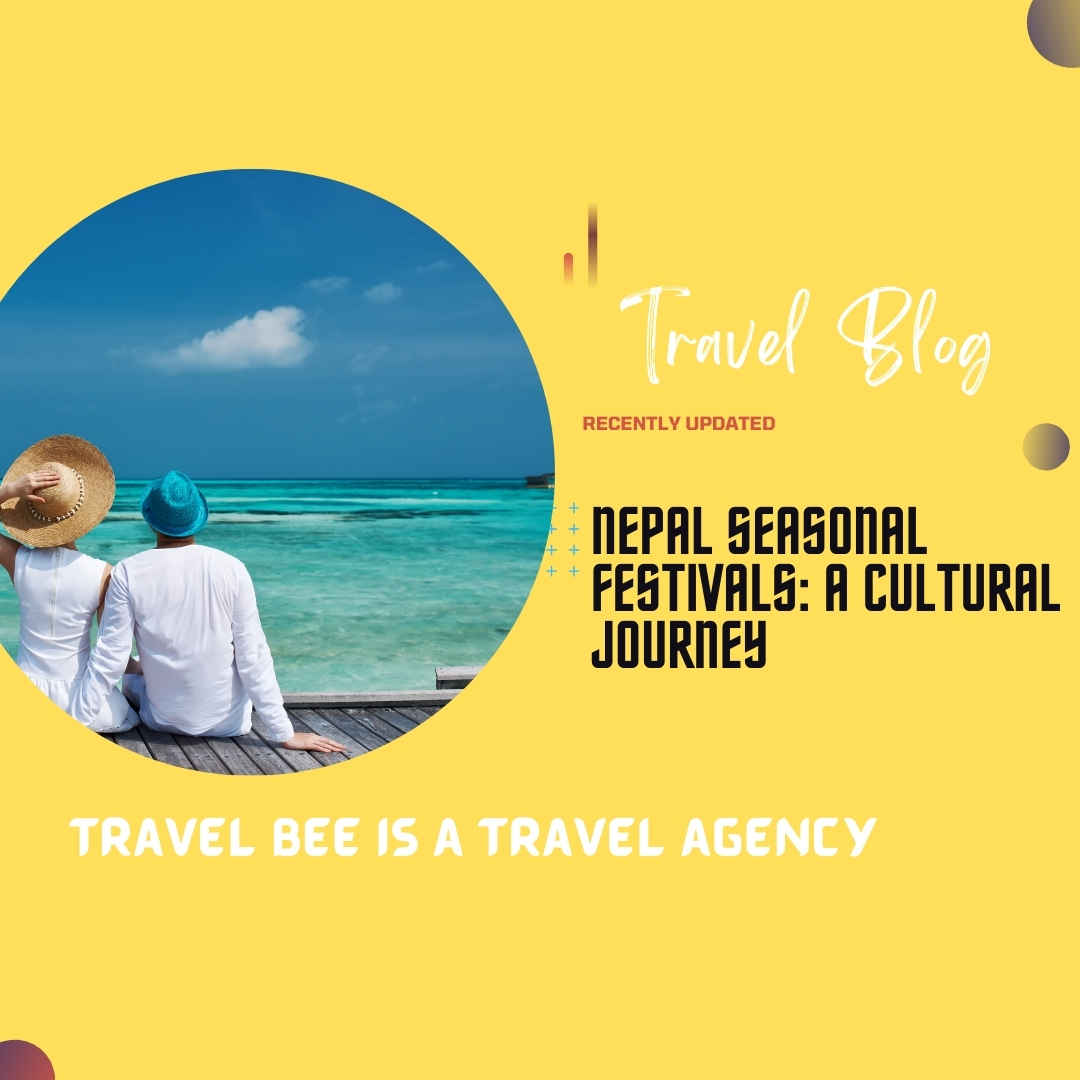
Nepal Seasonal Festivals: Embracing Nepal’s Cultural Heritage
Spring Festivals
Holi (February/March)
Holi, the festival of colors, ushers in spring with exuberant celebrations across Nepal. Streets and squares become canvases for vibrant powders and water, symbolizing the victory of good over evil and the arrival of spring. Tourists and locals alike join in, dancing to traditional music and enjoying festive sweets like gujiya and thandai, creating a joyous atmosphere of unity and playfulness.
Bisket Jatra (April)
Bisket Jatra in Bhaktapur marks the Nepalese New Year with fervent celebrations. The highlight is the pulling of chariots carrying idols of deities through narrow alleys adorned with colorful banners and intricate mandalas. This ancient festival not only reaffirms cultural identity but also fosters community cohesion as families come together to honor tradition through rituals, music, and communal feasting.
Summer Festivals
Buddha Jayanti (April/May)
Buddha Jayanti commemorates the birth, enlightenment, and passing of Lord Buddha with reverence and spiritual fervor. Pilgrims flock to Lumbini, the birthplace of Buddha, and other sacred sites across Nepal to light butter lamps, offer prayers, and participate in peaceful ceremonies. Nepal festival guide underscores Nepal’s deep-seated Buddhist heritage and serves as a serene pilgrimage for seekers of spiritual enlightenment.
Rato Machhindranath Jatra (May/June)
The Rato Machhindranath Jatra in Patan venerates Rato Machhindranath, the deity of rain and harvest. The festival culminates in a grand procession where devotees pull a towering chariot housing the deity’s idol through bustling streets. Music, dances, and elaborate rituals accompany the procession, symbolizing community solidarity and collective prayers for a prosperous agricultural season and harmonious living.
Monsoon Festivals
Janai Purnima and Gai Jatra (August)
Janai Purnima, a Nepal seasonal festivals sacred festival for Hindu men, coincides with Gai Jatra, the festival of cows, celebrated primarily in the Kathmandu Valley. Brahmins and Chhetris change their sacred threads (Janai) after purifying rituals, while families who have lost loved ones participate in processions with cows or children dressed as cows, believed to facilitate the journey of departed souls to heaven. The festival blends solemn rites with joyous processions, reflecting Nepal’s cultural resilience and spiritual depth.
Krishna Janmashtami (August/September)
Krishna Janmashtami honors the birth of Lord Krishna with devotion and festivity. Temples dedicated to Krishna, such as the Krishna Mandir in Patan, become focal points for elaborate rituals, devotional songs, and reenactments of Krishna’s childhood exploits (raas leela). The festival showcases Nepal’s cultural diversity and spiritual vibrancy, uniting devotees in celebration and communal harmony.
Autumn Festivals
Teej (August/September)
Teej holds great significance for Hindu women in Nepal, particularly in the Terai region, where married women fast for the well-being and longevity of their husbands. Clad in red saris and adorned with intricate jewelry, women gather to sing traditional teej geet (folk songs), perform intricate dances, and partake in rituals that celebrate the divine union of Goddess Parvati and Lord Shiva. Teej exemplifies Nepal’s cultural heritage and the strength of familial and spiritual bonds.
Dashain (September/October)
Dashain, Nepal’s most significant festival, spans 15 days of rituals, feasting, and family reunions. It symbolizes the triumph of virtue over vice, with families coming together to receive blessings and exchange tika (vermilion and rice paste) as a token of goodwill. Dashain Nepal festival guide includes flying kites, indulging in traditional feasts like sel roti and goat curry, and participating in cultural events that highlight Nepal’s cultural diversity and communal spirit.
Tihar (October/November)
Tihar, One of The Nepal seasonal festivals of Lights, spans five days of reverence and celebration. Each day is dedicated to different entities, including crows, dogs, cows, and brothers, culminating in Bhai Tika, where sisters bless their brothers for their protection and well-being. Homes and streets are adorned with oil lamps, marigold garlands, and intricate rangoli designs, illuminating Nepal’s cities with warmth and festivity. Tihar exemplifies Nepal’s cultural richness and the deep-rooted significance of familial bonds and communal harmony.
Winter Festivals
Maghe Sankranti (January)
Maghe Sankranti marks the end of the winter solstice with festivities among the Tharu community in Nepal’s Terai region. Families gather to feast on traditional delicacies like yam (tarul) and sesame seed sweets (til ko laddu), symbolizing prosperity and abundance in the new agricultural cycle. Maghe Sankranti reflects Nepal’s agrarian heritage and the communal spirit fostered through shared celebrations.
Losar (February)
Losar, the Tibetan New Year, is celebrated with enthusiasm by Nepal’s Sherpa, Tamang, and Tibetan communities. The festival begins with purification rituals to dispel negativity and welcome auspicious energies for the year ahead. Monasteries resonate with the sound of chanting monks, while communities come together for traditional dances, cultural performances, and feasts featuring delicacies like momos (dumplings). Losar showcases Nepal’s cultural diversity and the resilience of its Tibetan-influenced traditions.
Family Tours in Nepal: Adventures Amidst Natural Splendor
Cultural Exploration
Embark on a cultural odyssey through Nepal’s UNESCO World Heritage sites, including Kathmandu Durbar Square, Swayambhunath Stupa (Monkey Temple), and Pashupatinath Temple. Marvel at ancient architecture, intricate wood carvings, and the spiritual sanctity of these revered landmarks that embody Nepal’s historical and religious significance.
Wildlife Safaris
Delve into Nepal’s biodiversity with thrilling wildlife safaris in Chitwan National Park and Bardia National Park. Encounter endangered species such as the Bengal tiger, one-horned rhinoceros, and Gangetic dolphin through guided jungle walks, canoe rides along serene rivers, and jeep safaris led by knowledgeable naturalists.
Adventure Activities
Nepal offers exhilarating adventures for all ages and interests. Trek through the Himalayan foothills in the Annapurna or Everest regions, where trails reveal panoramic views of snow-capped peaks, verdant valleys, and traditional Sherpa villages. Raft down the Trishuli River’s thrilling rapids or soar above Pokhara’s Phewa Lake on a paragliding escapade that offers unparalleled vistas of Nepal’s natural grandeur.
Family-Friendly Accommodations
Select from an array of family-friendly accommodations that cater to comfort and convenience. Whether opting for luxurious resorts nestled amidst scenic landscapes, cozy lodges that offer authentic Nepalese hospitality, or welcoming homestays that provide cultural immersion, Nepal ensures a memorable and enjoyable stay for families of all sizes.
Planning Your Family Trip to Nepal
Travel Tips
Prepare for an unforgettable family vacation in Nepal festival guide with these essential tips:
- Pack Wisely: Nepal’s diverse geography requires appropriate clothing and gear. Pack layers, sturdy footwear for walking, and essentials such as sunscreen and insect repellent.
- Stay Hydrated: Carry water bottles and stay hydrated, particularly during outdoor activities and hikes in Nepal’s mountainous terrain.
- Respect Cultural Norms: Nepal is a culturally rich country with deep-rooted traditions. Respect local customs, dress modestly, and seek permission before photographing people, especially at religious sites.
Safety Considerations
Prioritize safety during your family adventure in Nepal with these precautions:
- Choose Accredited Providers: Book tours and activities with licensed operators who prioritize safety and sustainability.
- Stay Informed: Stay updated on weather conditions, especially during monsoon season or high-altitude treks. Follow guidance from experienced guides and local authorities.
- Health Precautions: Consider travel insurance and consult a healthcare provider for vaccinations or health advice before traveling to Nepal.
Conclusion
Nepal’s seasonal festivals and family tours blend cultural immersion, natural beauty, and adventurous activities. Whether reveling in the vibrancy of Holi, exploring ancient temples, or trekking in the Himalayas, Nepal promises an unforgettable journey that enriches the mind, strengthens family bonds, and creates lasting memories.
Plan your family trip to Nepal with Travelbee today and embark on an adventure that combines cultural discovery, thrilling experiences, and the Nepalese people’s warm hospitality amidst the Himalayas’ awe-inspiring landscapes.

